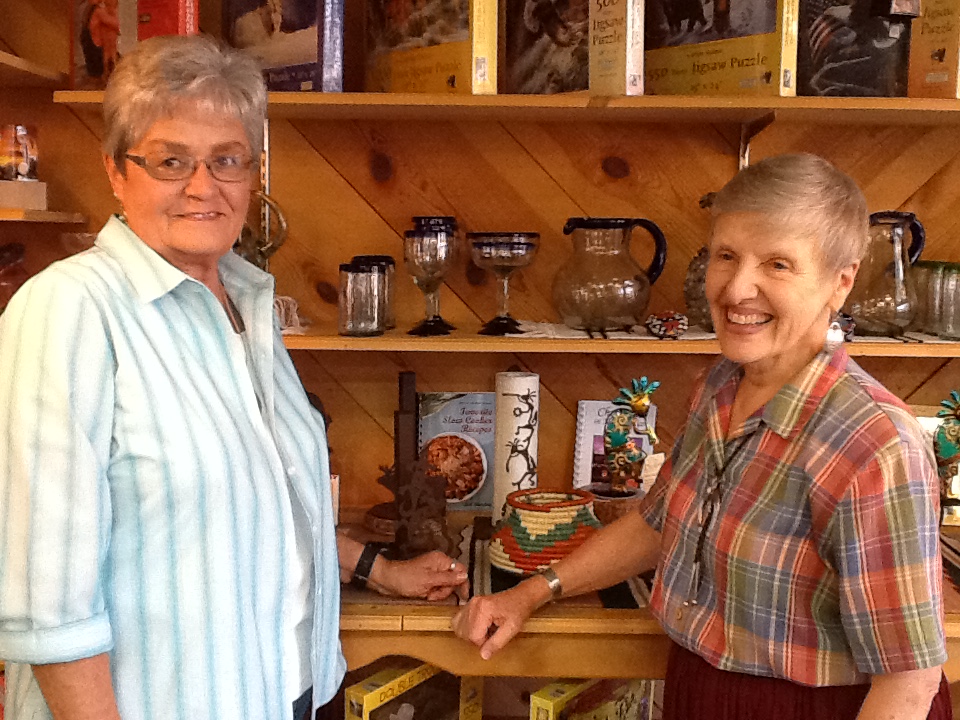
The Enduring Echoes: Legends from the Santa Fe Trail and Beyond
For us at Santa Fe Trail Traders, the vast, undulating landscape of America is more than just terrain to be traversed, goods to be exchanged, or a market to be understood. It is a living, breathing testament to the human spirit, a land whose very soil seems infused with the whispers of countless stories. Our wagons, whether laden with merchandise or the intangible cargo of history, roll over ground hallowed by legends – tales spun by indigenous peoples for millennia, forged in the crucible of pioneer ambition, and echoing through the canyons and prairies where our own ancestors plied their trade.
We are not merely merchants; we are custodians of memory, inheritors of a narrative tradition as vast and varied as the continent itself. From the sun-baked mesas of the Southwest to the dense forests of the East, America’s legends are its soul, a vibrant tapestry woven from fact, fear, hope, and the boundless human imagination. And from our unique vantage point, forever connected to the historic Santa Fe Trail, we see how these grand narratives intertwine, shaping the very identity of this nation.
The Ancient Earth and Its First Storytellers

Before any wagon wheel cut a rut into the prairie, before any European foot trod upon this soil, America was alive with stories. The indigenous peoples, who lived in harmony (and sometimes conflict) with this land for thousands of years, developed rich oral traditions that explained creation, the natural world, and the complexities of human existence. For us, traversing the Santa Fe Trail, we are acutely aware of these ancient echoes. The wind whispering through the grasses of the High Plains often feels like the voice of a forgotten elder, recounting tales of Coyote, the trickster, or the powerful spirits of the mountains and rivers.
These legends are foundational. They speak of the Earth Mother, of sky gods, of heroic figures who shaped the landscape and taught humanity how to live. The Navajo, for instance, tell of Changing Woman, who embodies the cycle of life and the beauty of the seasons, giving birth to the Hero Twins who rid the world of monsters. The Pueblo peoples share stories of Spider Grandmother, who brought wisdom and creativity. These narratives are not mere fables; they are spiritual blueprints, moral compasses, and historical records, passed down meticulously through generations. When our traders encountered the various tribes along the Santa Fe Trail – the Comanche, the Kiowa, the Apache, the Pueblo – we understood that we were interacting with cultures whose identities were deeply rooted in these profound, ancient narratives. Their legends taught them resilience, reverence for nature, and the importance of community, lessons that even we, in our modern endeavors, find ourselves reflecting upon.
The Westward Surge: Legends of Grit and Gold
The advent of European exploration and westward expansion brought a new layer of legend to the American narrative. The vast, untamed wilderness beckoned, promising opportunity, freedom, and often, unimaginable hardship. The Santa Fe Trail, established in 1821, became a vital artery in this westward surge, connecting the established American frontier with the ancient Mexican city of Santa Fe. Our traders, who navigated its perilous miles, were not just hauling calico and hardware; they were living out new legends in the making.
The tales of the pioneers, the mountain men, and the early explorers are etched into the American psyche. Figures like Daniel Boone, though operating further east, embodied the spirit of the trailblazer, pushing boundaries and facing the unknown with courage and cunning. Their stories, often embellished around campfires, became the bedrock of a new American mythology: one of self-reliance, rugged individualism, and an unyielding determination to conquer the frontier.
For us at Santa Fe Trail Traders, the trail itself is a legend. We hear the creak of the wagon wheels, the shouts of the teamsters, the distant cries of "¡Vaya!" from the carreteros guiding their oxcarts. We remember the dangers: flash floods, scorching deserts, unforgiving blizzards, and the ever-present threat of attack – sometimes from outlaws, sometimes from Native American tribes defending their ancestral lands. Each successful journey, each delivered shipment, each new trading relationship forged, was a testament to a spirit that bordered on the legendary. As Josiah Gregg, one of the most eloquent chroniclers of the Trail, penned in his seminal work Commerce of the Prairies, "The journey was fraught with perils… but the prospect of immense profits urged them on." This blend of risk and reward, hardship and triumph, forged a unique legend of resilience that defines the Santa Fe Trail trader.
Our Own Trail: Heroes, Haunts, and Hidden Riches
The Santa Fe Trail is particularly rich in its own specific legends. There are tales of lost gold and silver, buried by traders fleeing bandits or by prospectors who never made it back. Ghost stories abound in the crumbling adobe ruins of stagecoach stations and the deserted mining towns that sprung up along the route. We speak of the lone rider who still gallops across the plains on moonlit nights, searching for a lost love, or the ghostly voices heard near Bent’s Old Fort, echoing the laughter and lamentations of a bygone era.

These are not just quaint stories; they are the fabric of our identity. They remind us of the real dangers our predecessors faced, the hopes they harbored, and the indelible marks they left on the land. We often share the story of "Owlhoot," a legendary outlaw said to have buried his ill-gotten gains near Rabbit Ear Mountain, a prominent landmark on the Trail. Or the tale of the "Death of the Diamond of the Plains," referring to the once-thriving town of La Junta, now a ghost town, whose demise is shrouded in various local legends of curses and bad luck. These stories are a reminder that even the most pragmatic commercial venture has its mystical undertones, its moments when the rational gives way to the wondrous.
Folk Heroes: Larger Than Life, Quintessentially American
Beyond the specific legends of our trail, America is home to a pantheon of folk heroes whose stories, though often exaggerated, capture the essence of the nation’s character. These are the larger-than-life figures who embodied the ideals and aspirations of a young country pushing its boundaries.
Consider Paul Bunyan, the colossal lumberjack whose feats of strength shaped the very landscape, digging the Great Lakes and carving rivers with his axe. Or Johnny Appleseed, the gentle wanderer who spread apple trees across the land, symbolizing generosity and a harmonious relationship with nature. Even Pecos Bill, the cowboy raised by coyotes who could ride a cyclone, embodies the wild, untamed spirit of the American West.
These were the tales told around campfires, much like our own ancestors on the Santa Fe Trail might have spun yarns to pass the long, lonely nights. They provided both entertainment and inspiration, instilling values of hard work, ingenuity, and a certain irreverent humor in the face of adversity. For a trader facing weeks of isolation and danger, the thought of Paul Bunyan clearing a path or Johnny Appleseed bringing life to the wilderness might have offered a comforting sense of shared purpose and a belief in the power of the individual.
The Shadows and the Strange: America’s Enduring Mysteries
Not all legends are heroic or comforting. America’s vastness also lends itself to stories of the mysterious, the unexplained, and the genuinely terrifying. From the infamous Bigfoot lurking in the Pacific Northwest forests to the enigmatic Skinwalkers of Navajo lore, the continent is rife with cryptids and supernatural phenomena. The whisper of forgotten fortunes, like the legendary Lost Dutchman Mine in Arizona (or tales of similar caches along our own route), continues to lure adventurers into desolate landscapes.
The frontier, with its isolation and lawlessness, also birthed countless ghost stories and tales of vengeful spirits. Ghost towns, dotting the Western landscape, each come with their own spectral residents – prospectors who met a grim end, saloon girls still dancing in the shadows, or the mournful wail of a child lost to the harsh elements. These legends speak to the darker side of the American experience: the violence, the greed, the loneliness, and the profound sense of loss that often accompanied the pursuit of the American Dream. They remind us that for every triumph, there was often a tragedy, and that the past, in its spectral form, is never truly gone.
The Living Legacy: Our Role as Storytellers
For us at Santa Fe Trail Traders, these legends are not dusty relics of the past. They are living, breathing narratives that continue to shape our understanding of America and our place within it. They inform our respect for the land, our appreciation for resilience, and our understanding of the diverse cultural threads that make up this nation.
Every time we load our vehicles, plan a route, or engage in trade, we are, in a sense, continuing the journey of those who came before us. We are reminded that commerce is rarely just about profit; it is about connection, about bridging divides, and about the exchange of not just goods, but ideas and stories. The Santa Fe Trail was a conduit for trade, but it was also a conduit for legends – Native American myths meeting pioneer sagas, Mexican folklore blending with American tall tales.
In a rapidly changing world, the legends of America provide an anchor. They connect us to our roots, to the struggles and triumphs of our ancestors, and to the enduring spirit of a nation built on courage, imagination, and an insatiable desire to explore what lies beyond the horizon. As we, the Santa Fe Trail Traders, continue our journey, we carry these legends with us, knowing that they are not just stories from the past, but vital maps for the future, guiding us through the uncharted territories of tomorrow, just as they guided those who forged the original trail. The echoes of America’s legends are eternal, and we are proud to be among their keepers.


